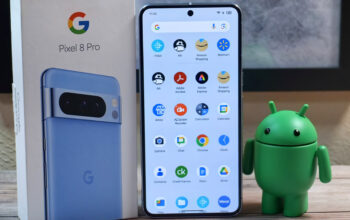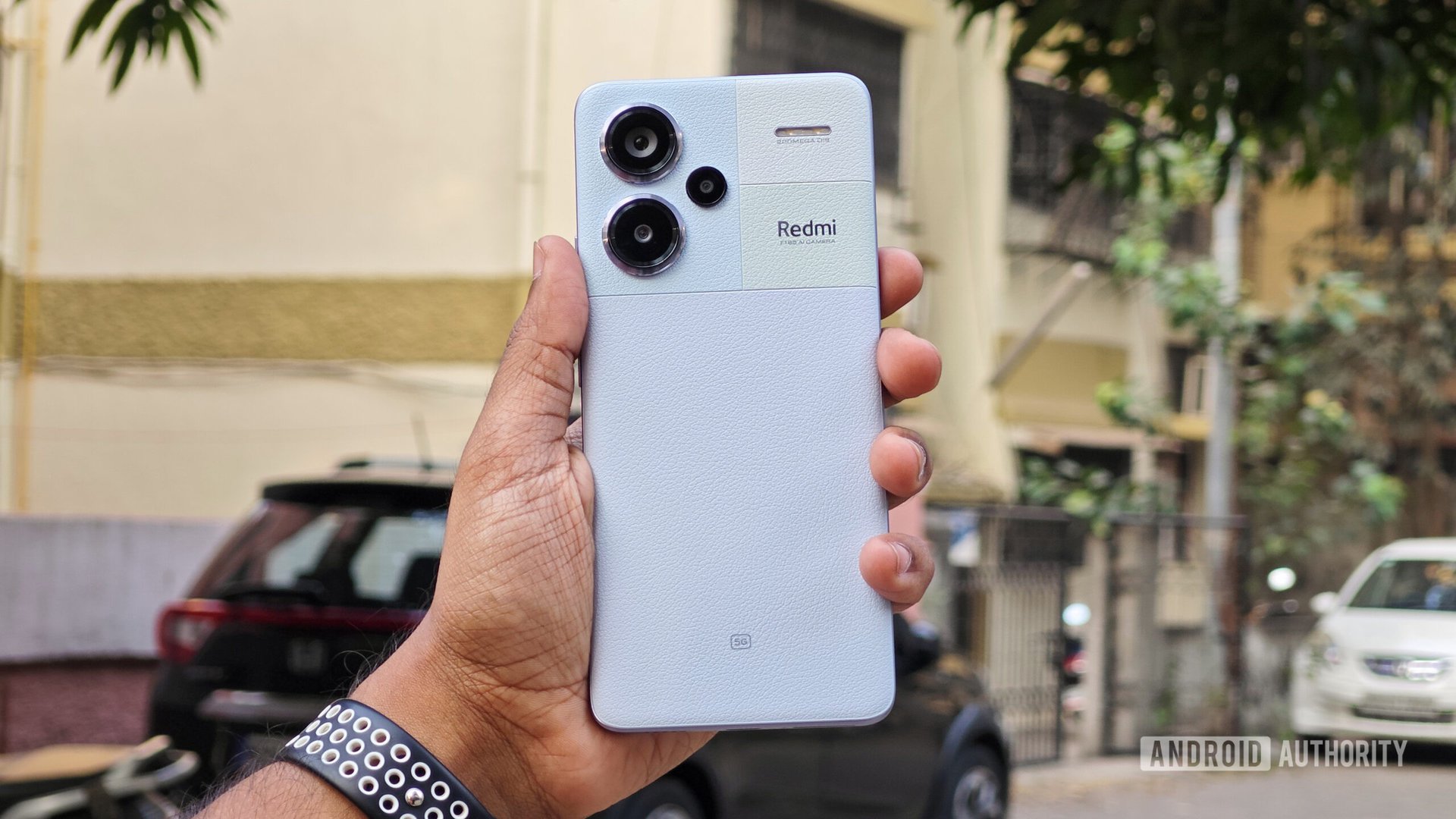
Aamir Siddiqui / Android Authority
One of the hallmarks of a great Android flagship is having a well-rounded spec sheet, checking all the boxes for features that users need and desire on their phone. We’ve seen mid-range Android phones also do this quite well, to the point where it can become difficult to recommend $1,000 flagships to users who just want a phone that works, especially when some of the more affordable flagships can still regress on desirable features like wireless charging and an IP rating.
It’s up to mid-range phones to maintain the pressure on the flagship end of the market by democratizing premium features and making them a part of the bare minimum. By that metric, the Redmi Note 13 Pro Plus puts some other, more expensive Android phones to shame.
The Redmi Note 13 Pro Plus democratizes water-resistance
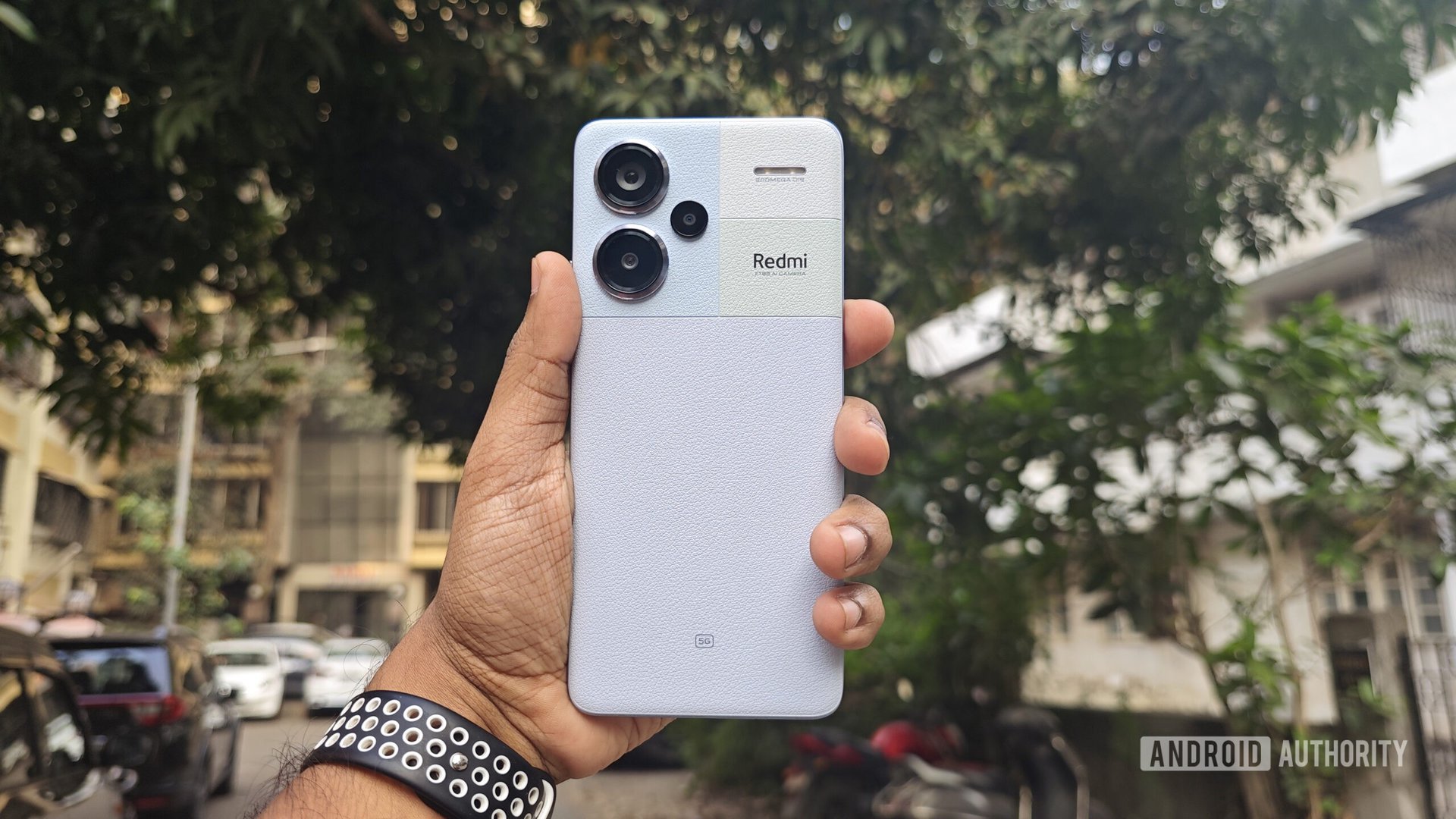
Aamir Siddiqui / Android Authority
One of the primary highlights of the new Redmi Note 13 Pro Plus is the IP68 rating. This is the first phone in the popular Redmi Note lineup that gets an IP rating, and the Xiaomi sub-brand is jumping straight to IP68.
An IP68 rating means that the phone is dust-tight and is water resistant even when immersed in fresh water, up to depths of 1.5m (4.9 feet) for up to 30 minutes. You’d still want to avoid intentionally drowning the phone since the warranty will not cover water damage. But if you accidentally get caught out in the rain, you can rest assured that your phone will likely be fine.
IP ratings have been a hit-and-miss on Android. Some phone lineups, like Samsung’s Galaxy S series, have remained committed to them, while others, like OnePlus’s flagship series, have been more inconsistent. Plenty of phones also stick to lower ratings like IP67, which protects against temporary immersion, and the poorer IP65 rating, which only protects against low-pressure water jets. IP54 ratings are also increasingly common in the budget tier, though this provides only a basic level of protection against liquids or dust.
Another cop-out we’ve seen is having plenty of water resistance built into the phone but not including an IP rating. Independent certification agencies grant IP ratings, and there are charges associated with the certification process. You’d also need to pass the test in the first place, so your product design also needs to accommodate the rigors of the test, which could further add costs. The higher the rating, the more the overall costs.
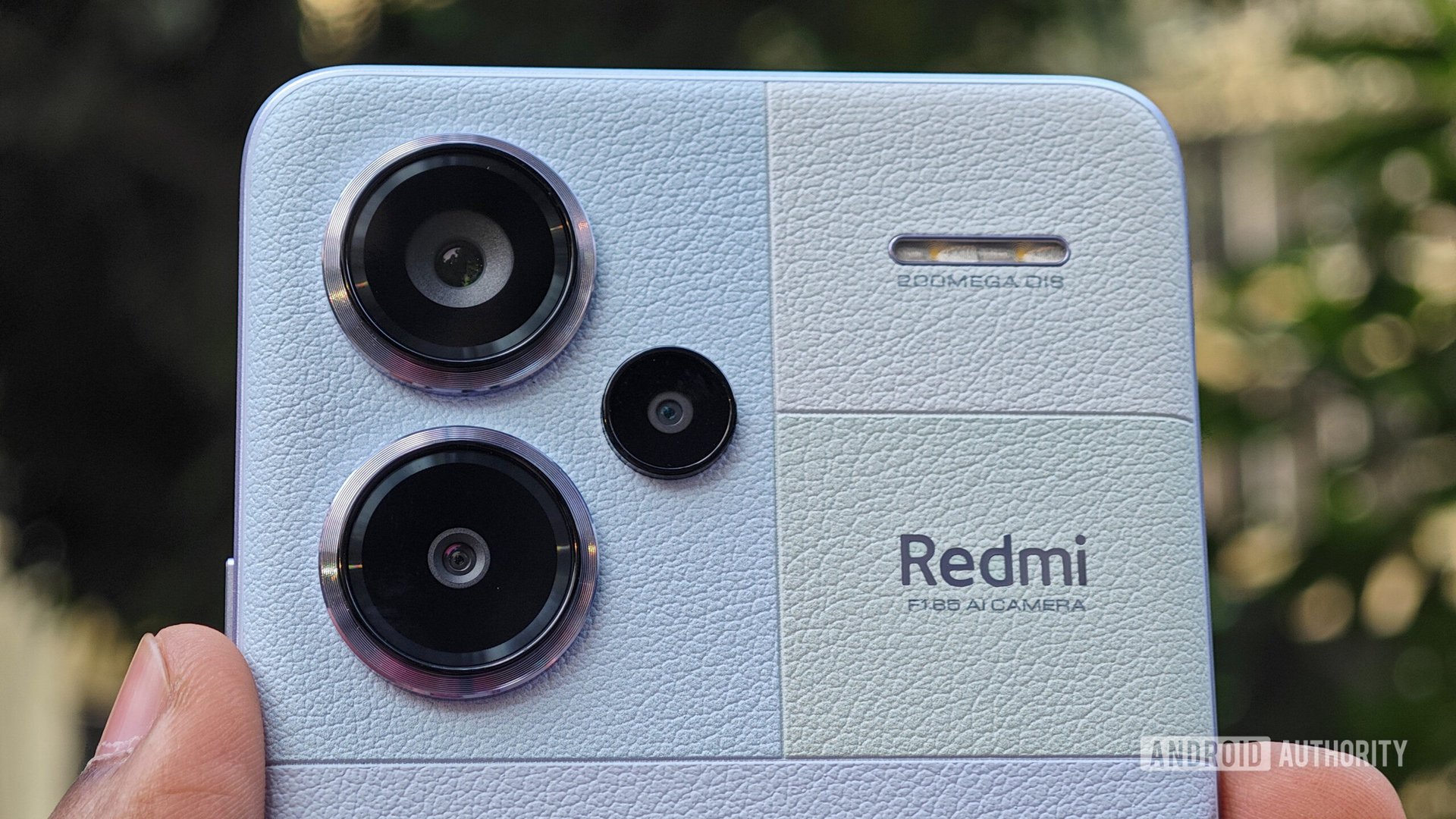
Aamir Siddiqui / Android Authority
With the Note 13 Pro Plus, Redmi is effectively raising the bar. Seasonal rains are widespread in regions like Europe and Southeast Asia, where the Redmi Note series is quite popular. If Redmi can go through the trouble of certifying this mid-range phone for such a high level of water resistance, flagships have no reason to skimp out on it. It’s a practical addition that will benefit users more than they realize it would.
If Redmi can certify a mid-range phone for such a high level of water resistance, flagships have no reason to skimp out on it.
Devices like the OnePlus 12 come with an IP65 rating in China, and the same is expected for global markets. While not a premium flagship per se, the Nothing Phone 2 comes with a lowly IP54 rating. All of this pales compared to IP68, and the Redmi Note 13 Pro Plus costs a fraction of what one expects to pay for a top flagship in 2024.
The Redmi Note 13 Pro Plus is also a great mid-range Android phone
IP68 isn’t the only highlight on this phone. The Redmi Note 13 Pro Plus is a serious upgrade to the Redmi Note lineup, with a radical redesign, a curved display, a competent processor, and more. I’ve been using this phone for the past two weeks, and it’s been a good experience, albeit with the usual Redmi caveats.
The Redmi Note 13 Pro Plus display is one of its strengths, as it makes the phone quite indistinguishable from flagships with curved displays. It’s a bright display with a global brightness of 1,200 nits with auto-brightness and a peak brightness of 1,800 nits for HDR content. Gorilla Glass Victus protection is the cherry on top.
The design of the Redmi Note 13 Pro Plus points to Xiaomi’s premium ambitions with this product line.
The design of the phone is also a head-turner. It’s unlike any Redmi Note from the past, and the vegan leather collage on the back of the Fusion Purple color certainly got people interested in the phone. It’s also a reasonably balanced phone at 199g for this variant, which feels solid in the hand but not overwhelmingly heavy. It truly is an incredible phone to hold, and inarguably the most premium feeling Redmi Note so far.
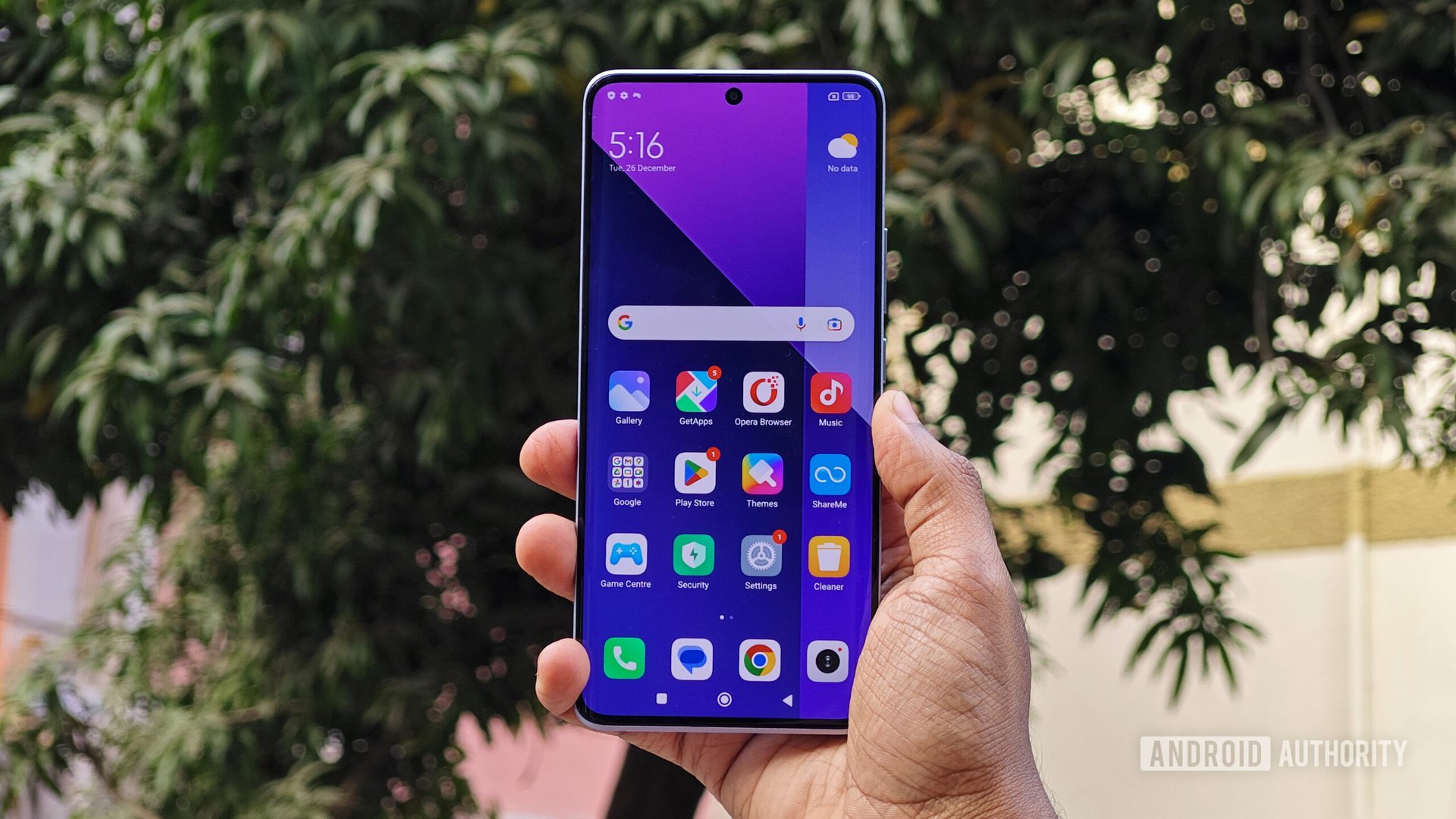
Aamir Siddiqui / Android Authority
The Dimensity 7200-Ultra on the Redmi Note 13 Pro Plus is a practical system on a chip (SoC). It has two Cortex-A715 cores clocked at 2.8GHz and six Cortex-A510 cores clocked at 2GHz. The setup works well for everyday tasks, and I didn’t run into scenarios where I felt the need for an even more powerful SoC. If you like to game on the highest settings, you would need an even more powerful chip, but casual gamers will not find any reason to complain.
The Redmi Note 13 Pro Plus has a 5,000mAh battery that comfortably lasts a day. It supports 120W fast charging support with the included USB A-to-C charger. Redmi claims a full charge in 19 minutes, but in my experience, a full charge takes between 30 to 35 minutes, even with the “speed-up charging” settings enabled.
But not everything is perfect
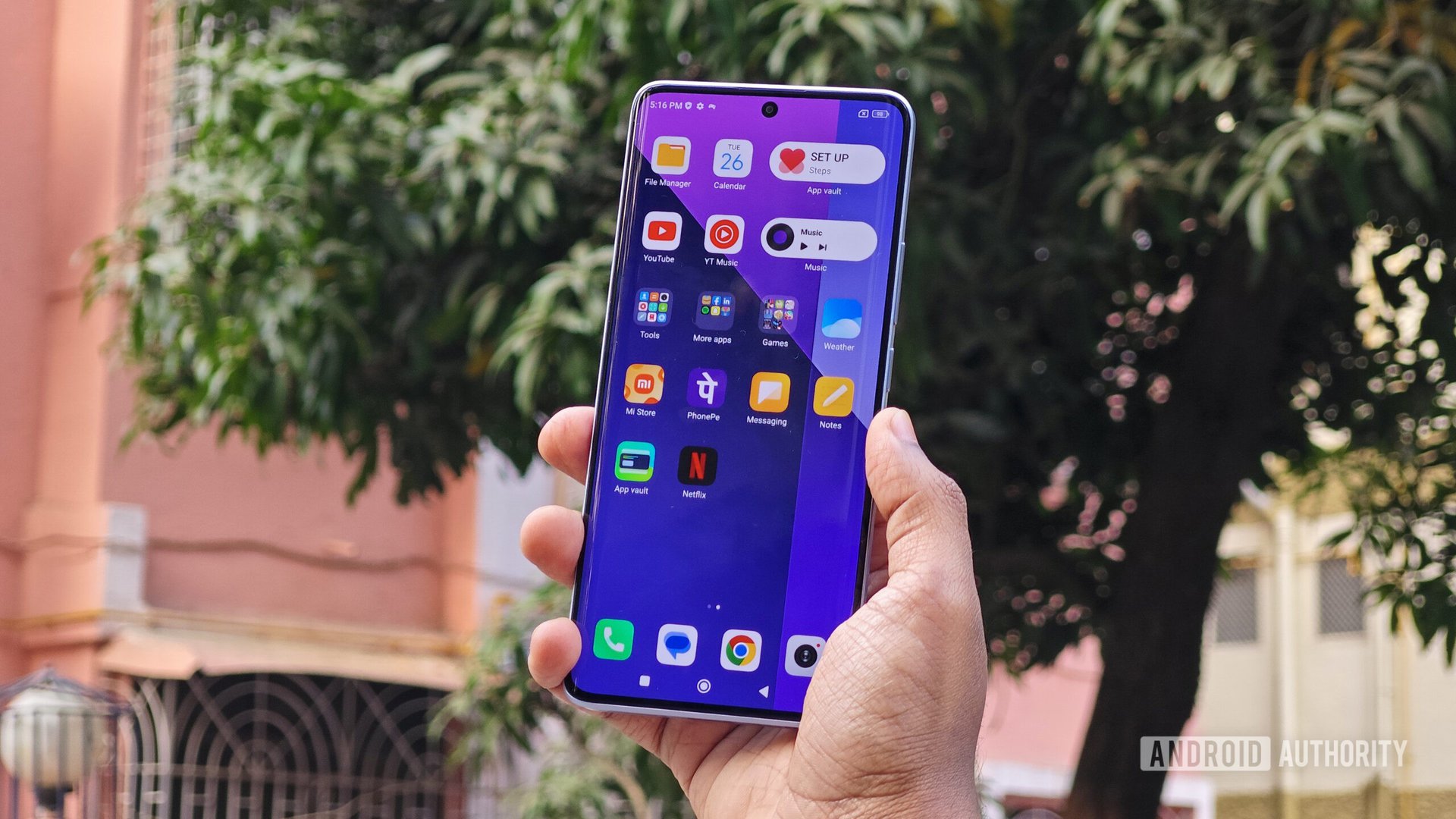
Aamir Siddiqui / Android Authority
The Achilles’ heel of Xiaomi’s mid-range and budget smartphones remains the over-reliance on software monetization elements in regions like SEA, particularly in countries like India. These include pre-installed apps (a.k.a. bloatware), “recommendations” (a.k.a. ads for apps you can install), and some dark patterns to push users into agreeing to these.
For instance, the MIUI setup process will attempt to get your consent for the Glance lock screen and to update apps through GetApps, and unsuspecting users may agree to the same. I accidentally agreed to GetApps during the setup process and ended up with a phone with many games installed. To confirm, I wiped my phone and spotted the setting to uncheck, which gave a cleaner MIUI experience post-setup, so at least it is easy to do. The GetApps experience could be positively different in the EU region, though.
Above is what the MIUI home screen on a newly set up phone with no Google account signed in looked like. This is with the GetApps setting checked, which automatically installs a folder full of games. Practically all of the bloat can be easily uninstalled, but it shouldn’t have been there in the first place, considering Xiaomi’s premium ambitions, even for its sub-brands.
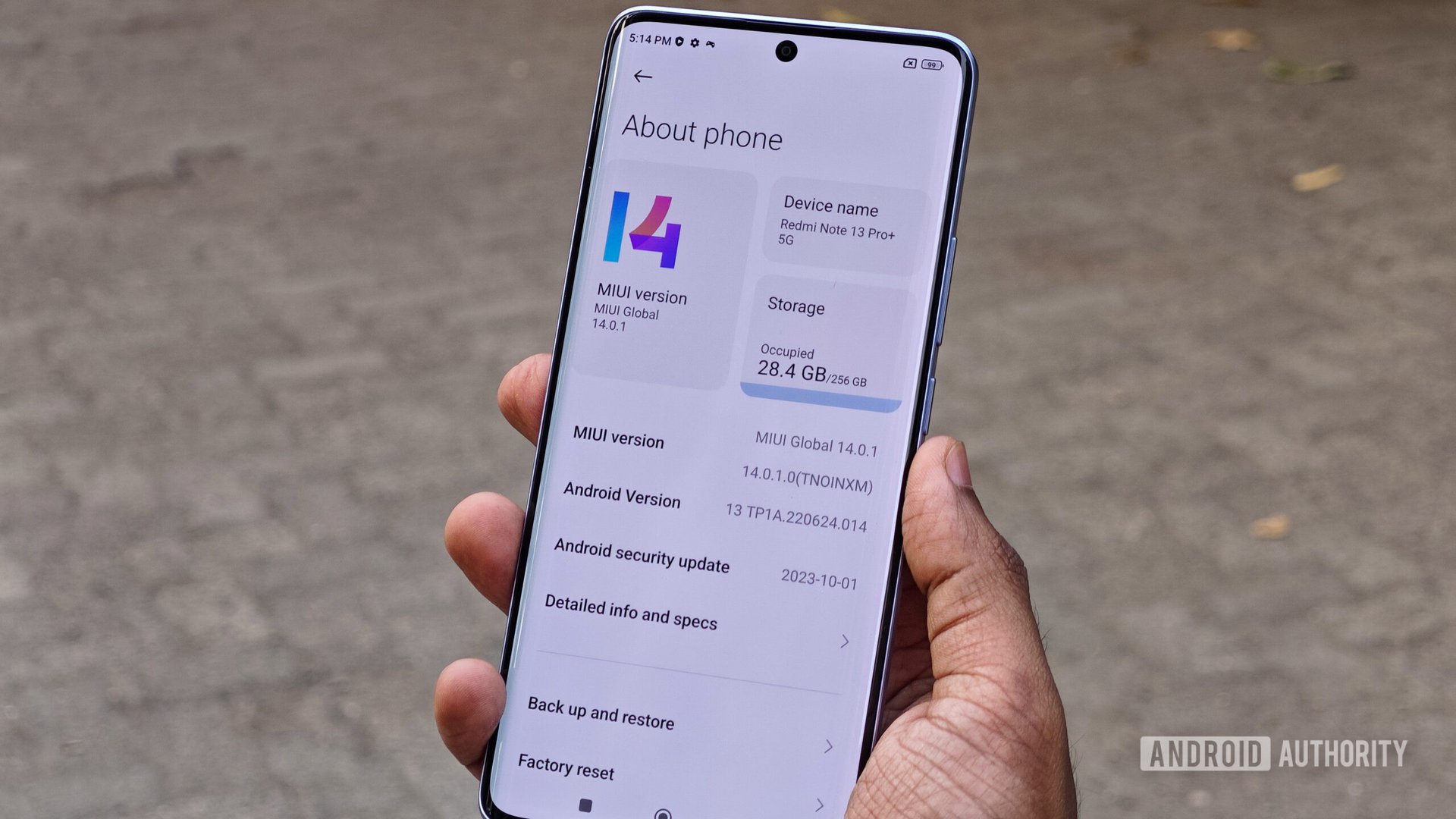
Aamir Siddiqui / Android Authority
The Redmi Note 13 Pro Plus launches with MIUI 14 on Android 13. Android 14 has been out for a few months, and so has HyperOS. Xiaomi is at least promising three generations of Android upgrades and four years of security updates for this phone. Yet while that’s a good update policy on paper, one generation of Android updates will be eaten up to catch up to the current Android version.
The Redmi Note 13 Pro Plus also misses out on wireless charging and eSIM connectivity. These would have been a great addition to the phone and would have cemented it as a device that can truly challenge the elite flagships.
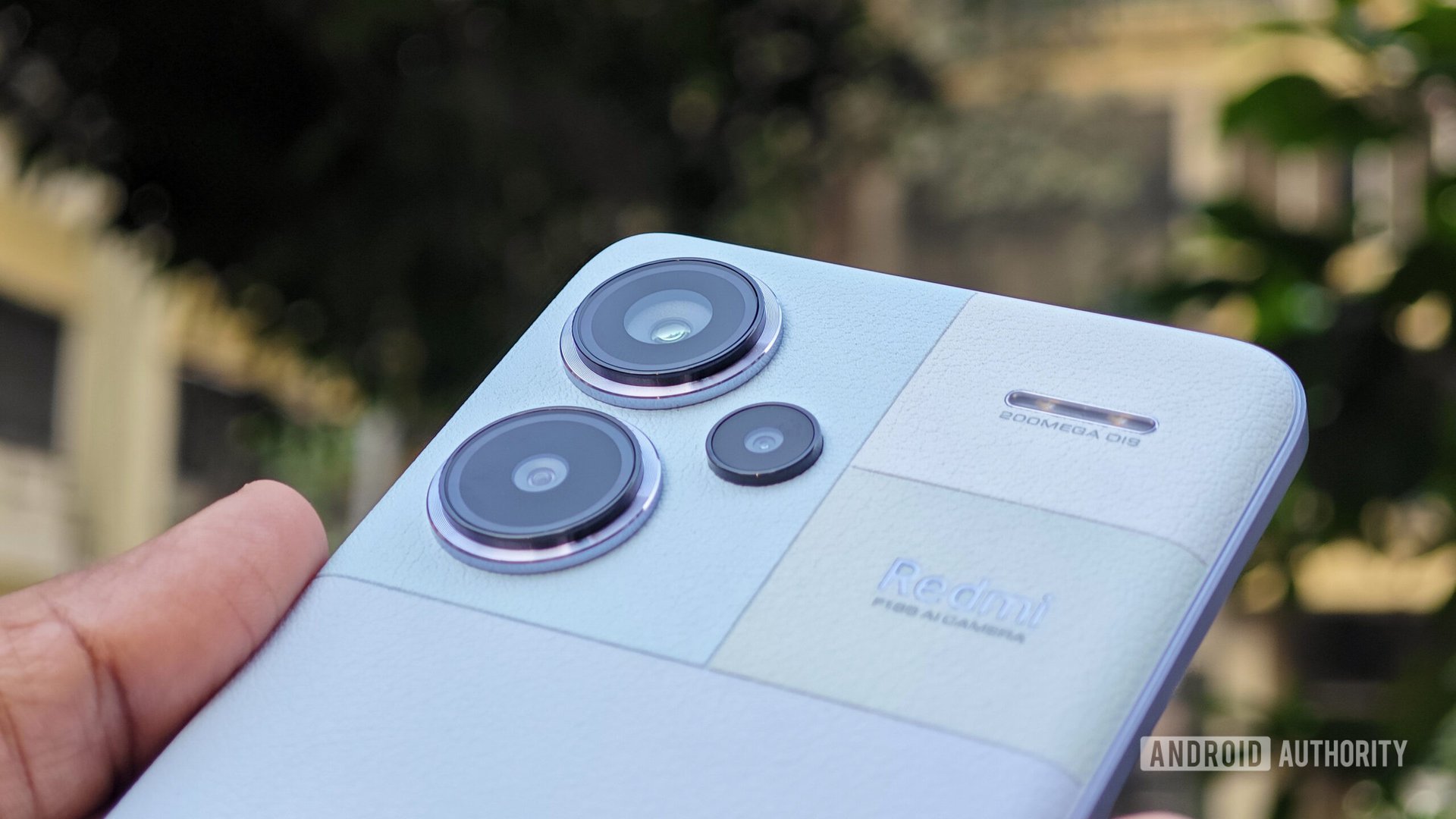
Aamir Siddiqui / Android Authority
Further, the Redmi Note 13 Pro Plus features a 2MP macro camera. Based on my testing, the 2MP macro camera does not add material benefits to the user experience and could have been skipped.
Redmi Note 13 Pro Plus specs
| Redmi Note 13 Pro Plus | |
|---|---|
|
Display |
6.67-inch Super AMOLED |
|
Processor |
MediaTek Dimensity 7200-Ultra |
|
RAM |
8GB, 12GB LPDDR5 |
|
Storage |
256GB, 512GB UFS 3.1 |
|
Battery and charging |
5,000mAh battery |
|
Cameras |
Rear:
– 200MP main ƒ/1.65 aperture, 0.56μm pixels, OIS – 8MP ultrawide – 2MP macro Front: |
|
Audio |
Stereo speakers |
|
Security |
In-display fingerprint |
|
Water resistance |
IP68 |
|
Connectivity |
Wi-Fi 6 |
|
Software |
MIUI 14 based on Android 13 |
|
Materials |
Gorilla Glass Victus front |
|
Dimensions and weight |
161.4 x 74.2 x 8.9 mm |
|
Colors |
Fusion Black, Fusion White, Fusion Purple |
Redmi Note 13 Pro Plus price and availability
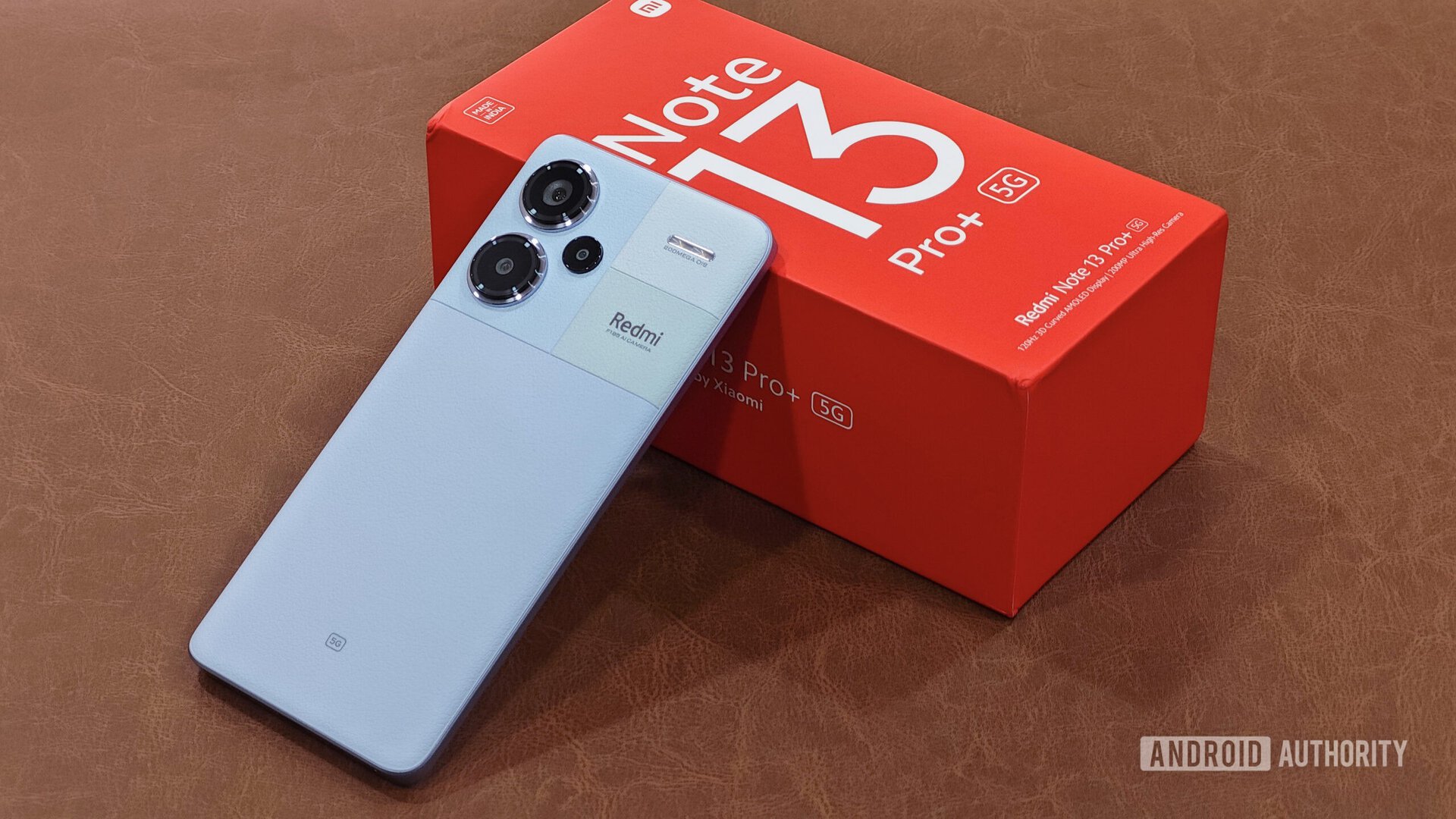
Aamir Siddiqui / Android Authority
- 8GB/256GB: Rs. 31,999 (~$384)
- 12GB/256GB: Rs. 33,999 (~$408)
- 12GB/512GB: Rs. 35,999 (~$432)
The Redmi Note 13 Pro Plus has been launched in India, and it is going on sale from January 10, 2024 across Mi.com, Flipkart, and offline stores. The phone will also be launching globally on January 15, 2024.
The Redmi Note 13 Pro Plus continues to offer a value-centric experience, with a strong spec sheet and surprisingly value pricing.
While yes, this is quite an “expensive” Redmi Note, it still packs enough punch to survive, even in hyper-competitive markets like India. Xiaomi may have an uphill battle convincing users to consider a Redmi Note as a premium phone, but that’s a battle the brand has been fighting for some years now, and MIUI’s monetization maneuvers only add to the challenge. If you can clean up MIUI’s monetization (which is fairly simple to do), it’s an excellent phone that can pass off as a flagship while costing a fraction of the money.
For less than $400, you get more phone than you pay for.
For tropical countries like India, which see plenty of rain in a year, the IP68 rating is a boon, and one needn’t spend flagship money for the privilege and peace of mind.



